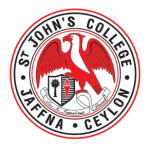College History
December 31, 2022 2023-08-10 10:46College History
College History
The Nallur English Seminary was established in Jaffna in March 1823 by Rev. Joseph Knight, the first missionary of the Church Mission Society (CMS) of the Anglican Church (CMS). The school had only 7 students and was in Knight’s bungalow.
In 1845 the school was relocated to Chundikkuli and renamed the “Chundikkuli Seminary”, and in the same year the Church Mission Society took over the Old Portuguese St. John the Baptist Church. In 1846 school moved into a hall next to the church. The church was demolished in 1859 and replaced by the current church. Rev. Joseph Knight also helped in translating the “English to Tamil” dictionary.
The school was renamed St. John’s College in 1891.
During the Second World War, Japan bombed Colombo and Trincomalee on the 5th of April, 1942. Subsequently, a few weeks later several school buildings in Colombo were taken over by the British Military as barracks for their troops. School education in Colombo was severely disrupted. This resulted in a sudden exodus of schoolchildren from Colombo to other provinces. St. John’s College responded by generously opening its doors to the vast numbers of displaced students, from different Colombo schools, despite having very meager facilities to accommodate all of them. These students had lived and been educated in environments, where the values, traditions, codes of conduct, and behaviour patterns were far removed from what prevailed in Jaffna then.
The free education system was introduced by the government in 1945 but SJC chose to remain outside this system. Until then, students had to pay school fees. If there were two brothers from the same family, half of the fee was waived for the younger of the two. If there were three brothers from the same family, the total fee was waived for the third child.
In 1951 SJC joined the free education system. Most private schools in Ceylon were taken over by the government in 1960, but SJC chose to remain a private and non-fee-levying school. In order to remain private Johnians did a door-to-door fundraising campaign requesting donations and also raised funds by selling some of the Mahogany trees inside the College premises.
1958 – Communal Disturbance: Unfortunate communal disturbance of May and June sent a large number of Tamils from the South to the North of the island. SJC stretched its facilities beyond its capacity to accommodate a total of 251 displaced students resulting in the total number of enrolment increasing from 1174 to 1645.
1983 July Riots – St. John’s under the leadership of Late Principal.C.E.Anandarajan rose up to the challenge and admitted about 400 displaced students by constructing five additional classrooms to accommodate them.
2005 – Following the Tsunami of Dec 2004, under the leadership of the Late Principal Mr.S Thanapalan, the College twinned two schools affected by the Tsunami. RCTM School Manalkadu Vadamaradchi and GTM School Kallapadu Mullaithivu were provided with support in academic instructions for the children and also the families from the surrounding areas of the schools were given some of the essential facilities.
2009 Civil War – The College admitted 791 school-going children released from the Welfare Centres of Internally Displaced Persons (IDP), and out of the total number admitted, 317 children were enrolled in the Hostel under the leadership of Rev.N.J. Gnanaponrajah. They were given the privilege of free education, free meals, and accommodation. Additionally, they were also given access to recreational facilities and were provided with the necessary clothing and whatever was needed for their education and sports.


